#fairytales in france
Text
Since I am on the topic of these people that get a lot of criticism for their take on fairytales but still deserve to be kept around due to their influence, I want to briefly evoke Bruno Bettelheim's book "The Uses of Enchantment", known in France as "Psychanalysis of fairytales".
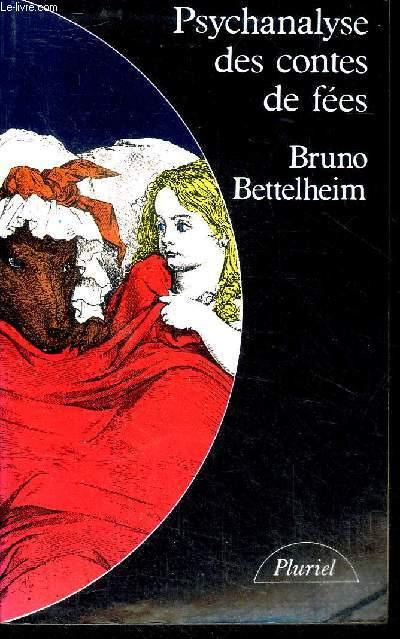
Note that I will not speak of the book itself or the reception of the book in English-speaking countries, but I want to talk about its reception in France and an impact it had on France. Today, numerous elements of the book have been debunked or criticized, coupled with many people misunderstanding the intentions of Bettelheim or misinforming about the context of the book or how it had to be read. As a result, today there is a tendency to crap on this book or laugh about it when we talk about fairytales analysis. However this book had a great importance in France when it came to "save" fairytales.
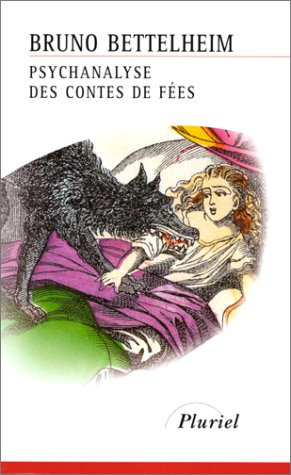
Before going into the general, as a brief piece of personal experience - which isn't exclusive to me, as others also shared this. This book actually was what got me into the analysis and study of fairytale. Or rather, when I read it as a pre-teen, it made me discover that... fairytales could have depths. Fairytales could have hidden meanings behind being simple children stories. It made me consider how these stories could be taken and reinterpreted as so many allegories and metaphors, it opened my eyes to a certain visceral, psychic, social aspect of these tales, and without this book I certainly would not have been into fairytales as I am today.
Not that this book is the ultimate resource of fairytale analysis - and the entire process of a psychological reading of fairytales is someting that exists but should not be taken into account when trying to explain them (fairytales being the produce of the encounter between literature and folklore). However, this book stayed a door-opening key for me, outdated maybe, overthinking stuff I guess, but that at least allowed me to glimpse into the "great beyond" behind these stories.
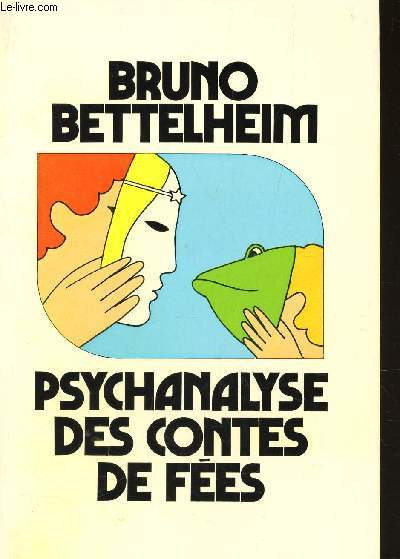
And now for my actual point... How Bettelheim's book saved fairytales in France. This is something I learned when studying the life and work of Pierre Gripari - in a book called "Pierre Gripari, un passeur d'écritures" by Inna Saranovska.
When Bettelheim's book reached France in the late 70s, fairytales were in a bad spot when it came to cultural authorities. Already fairytales had been reduced in people's mind to simple, naive children stories only good for making American cartoons (cough cough, Disney). But those of Perrault were still evoked and studied in schools (little schools for little children) because it was part of the heritage of France, of French culture, and the evolution of French literatue...
However what happened in the 70s? The very serious project of just burying fairytales was brought forward. The talks by politics and school authorities were simple: let us stop teaching fairytales to children in school, let's remove fairytales from school libraries, we do not have any use for them anymore, let them be forgotten. On one side, as I said, there was a discredit due to them being seen as silly children story, and thus no real pedagogic or "useful" chilren literature. But on the other side, there were very concrete and serious political business involved - fairytales were seen as antithetic, and opposed, to the principles of the modern Republic of France. Fairytales were seen as backward antiquities that went against what a great democratic nation should be. For example, people really did took issue in the fact that fairytales depicted monarchies, with kings as absolute authorities, and where a happy ending meant to end up prince or princess. For them, it was literaly teaching children to favor and idealize monarchy when they should rather learn about democracies and republics, and while it might seem silly today, it was serious back then and what almost led to the complete erasure of fairytales from school programs.
But then came Bettelheim's book. A book which proved to these folks that fairytales could be of a deep, psychological, social use to children. A book which taught these authorities to see beyond the "silliness" of these children stories or the "backward social message", and which told them how these stories could contain and express the deep fears, the secret desires of children, and help them grow up and deal with familial, social relationships. The book was a best-seller in France, and it completely changed the higher-ups opinion, and convinced tem fairytales should indeed be maintained in school - because fairytales were now "serious" due to being part of the very serious and praised domains of psychology and psychanalysis (which was all the fad and rage in the second half of the 20th century France).
And as such - no matter what you might say about the book's uality today - it can still be thanked for actually "saving" fairytales in France.

#fairytales in france#reception of fairytales#the uses of enchantment#bruno bettelheim#fairytale analysis#history of fairytales
242 notes
·
View notes
Text

'Old French Fairytales' penned by Sophie Rostopchine, Comtesse De Segur illustrated by Virginia Frances Sterrett, 1920
400 notes
·
View notes
Text
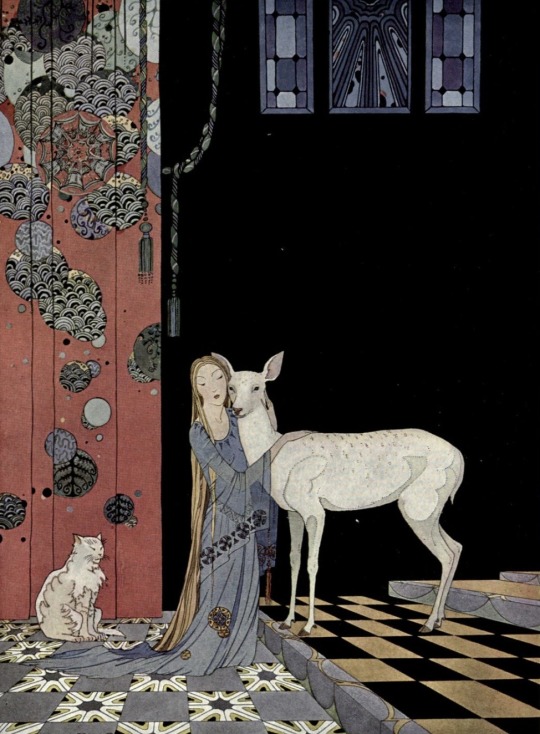

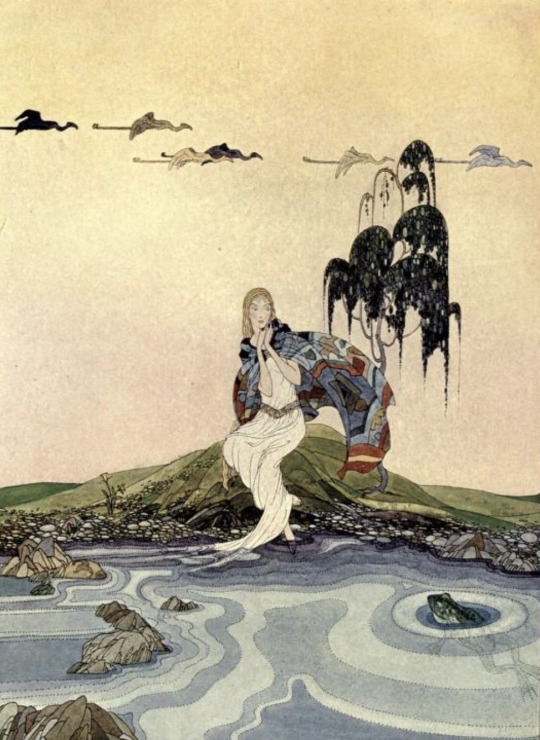
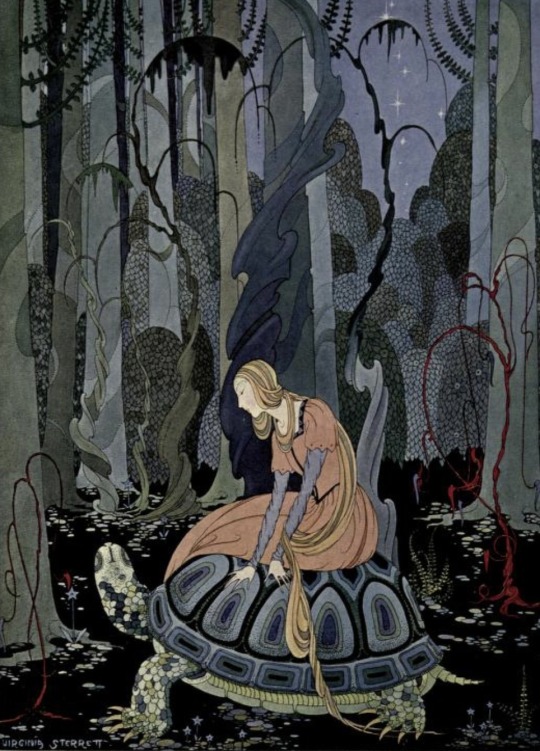
Illustrations by Virginia Frances Sterrett ft. in the book texts Old French Fairy Tales by Comtesse de Séguer
She illustrated these at the age of 19.
#collage#art#collage material#magazine#1920#public domain#artwork#fairytale#illustration#magic#fantasy#paintings#virginia frances sterrett#aesthetic
268 notes
·
View notes
Photo
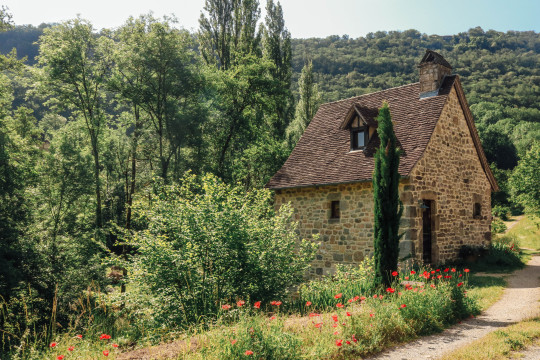
Autoire, France
#myphotography#france#autoire#cottage#summer#europe#nature#snow white#fairytale#poppies#countryside#france countryside#photography
639 notes
·
View notes
Text

Frontispiece, from The Arabian Nights by Virginia Frances Sterrett (1928)
#virginia frances sterrett#art#illustration#golden age of illustration#1920s#1920s art#vintage art#vintage illustration#vintage#american art#american artist#books#book illustration#fairy tales#fairy tale#fairytale art#frontispiece#arabian nights#virginia sterrett#classic art
797 notes
·
View notes
Text
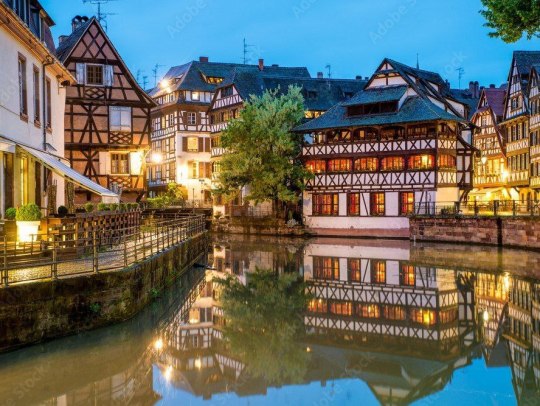
📍 Strasbourg, France 🇫🇷
#dark academia#light academia#classical#academia aesthetic#escapism#academia#books and libraries#classic literature#books#architecture#place#travel#photography#strasbourg#france#fairytale#royal core#cottage core#aesthetic#academic#mood#vibe#beautiful#tumblr
93 notes
·
View notes
Note
Can I give the kitty a hug?
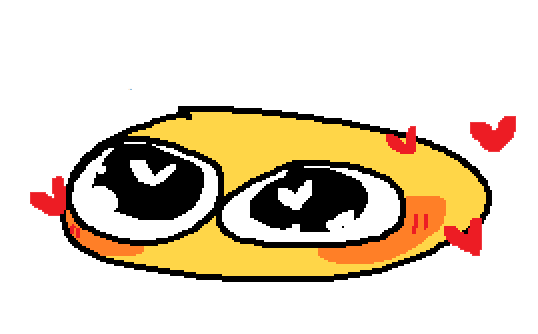
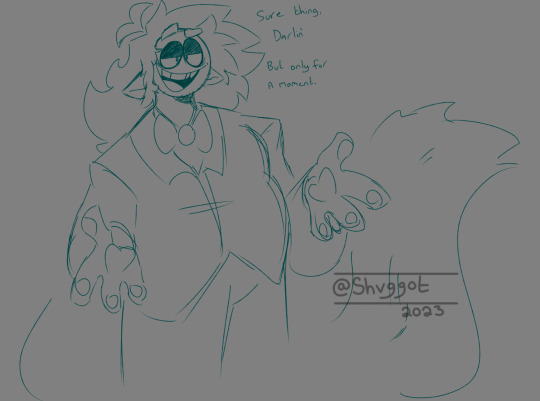




[Imma add alt text on my phone]
@vellsper
#bob velseb#bob velseb x reader#bob velseb fanart#bob vesleb#sr pelo spooky month#art#fanart#alice in spookymonth au#spooky month au#spooky month#answered asks#fairymonth au#fairytale au#bob velseb au#Cheshire bob#my art#thebekashow#vellsper#Sammy Frances
104 notes
·
View notes
Text
I'm sure there's more but these are some of the really notable nods to other classic children's stories and Disney princesses that they put in the live action Cinderella

An old beggar woman
This scene with the fairy godmother first appearing like a haggard beggar before revealing herself as a beautiful enchantress is such a nod to the opening of the Beauty and the Beast cartoon. She's got the heavy hood like the stained glass crone-enchantress does and you somehow know what's at stake from the moment she asks for the milk. Cinderella of course shows the kindness that the young prince failed to do even though she's having the worst day ever and this lady is not just haggard but uncouth and a little bizarre. She passes the test and looks beyond the externals to the heart.

A prince in the forest
Handsome prince riding his horse through a forest and comes across a beautiful and mysterious girl... Is it cartoon Sleeping Beauty or live action Cinderella? I love that they not only gave Prince Charming/Kit a personality and a plot but that when doing so they mapped a lot of Prince Philip onto him (the best actual royal Disney prince imo) he's got a good relationship with his dad but also stands up to him on things like marrying outside of his class and having different visions for the future but you can tell Philip and Hubert care for each other and have a similar relationship to Kit and the king. Both the king and King Hubert say almost the same lines about "you can't marry a girl you just met once in the forest" they even give him some Hubert-esque facial hair and Kit gets to do a bunch of gallant horseback riding scenes just like my fav prince Philip
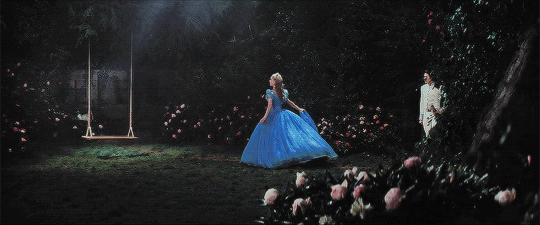
A Secret Garden
Now this isn't a princess nod but most children have read the Secret Garden or watched one of the many film adaptations. What I love about this being part of the story is that without explicitly stating it, anyone who's familiar with the Secret Garden, will know the backstory it's inclusion implies. It's their way of telling us Kit spent time with his mother here and it's special to him and he's sharing that with his mystery princess because he trusts her. "I've never shown this to anyone" plus the carryover of what we all associate with a "secret garden" gives us all the subtext we need to know that the garden was his mother's. Add to that Ella's hesitation to get on the swing it's almost like she knows too. It's just woven into the film where this all is so self evident without anything having to be said overtly. Absolutely masterful storytelling weaving in all these elements from the staples of childhood stories to add a texture to this adaptation where you know more than is said due to the cues they give the audience that tie in with other familiar stories
#Cinderella#2015 Cinderella#cinderella 2015#lily james#richard madden#prince charming#prince kit#prince philip#sleeping beauty#ella#ella and kit#king Hubert#the secret garden#secret garden#frances hodgson burnett#beauty and the beast#old beggar woman#beautiful enchantress#fairytales#fairy tales#children's stories#children's books#fairytale#fairy godmother#hairy dogfather
10 notes
·
View notes
Text







102 notes
·
View notes
Text




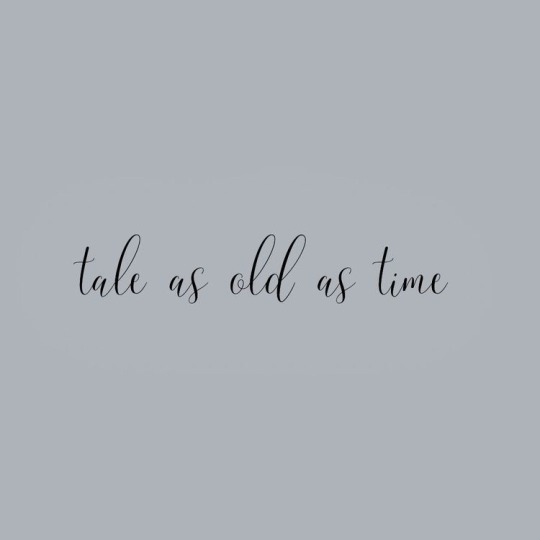

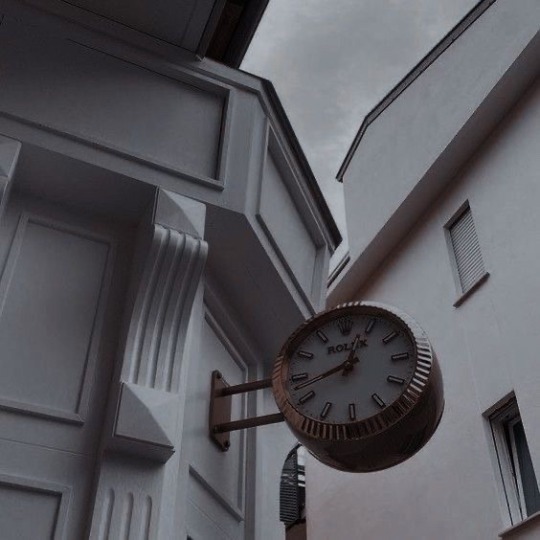
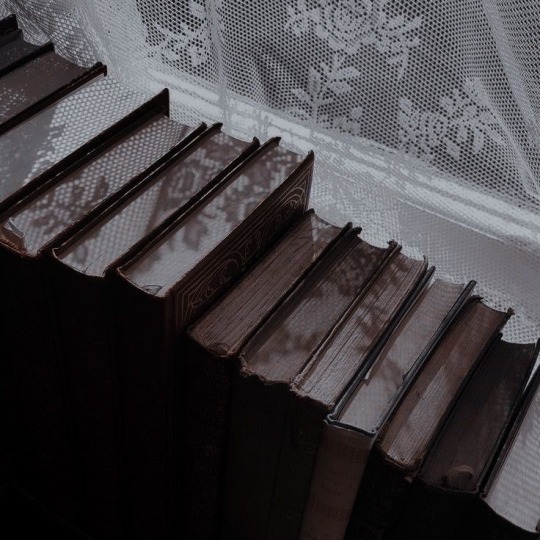

#aesthetic#beauty and the beast#beauty and the beast aesthetic#belle aesthetic#disney#disney belle#disney princess#disney princess moodboard#fairytale#filter#france aesthetic#modern#modern disney#modern belle#modern belle aesthetic#moodboard#moodboard aesthetic#princess
76 notes
·
View notes
Text
Some interesting facts taken from Jean-Marc Moriceau’s “Histoire du méchant loup, 3000 attaques sur l’homme en France, XVe-XXe siècles” (History of the bad wolf, 3000 attacks on men in France, 15th to 20th century)
1) Gustave Doré depicting the Wolf from “Little Red Riding Hood” as larger than the little girl might be more historically accurate than we think. According to the records, the average size of French people born between 1666 and 1694 was 1 meter 62 ( 5,3 feet). Meanwhile, the size of the wolves killed during this same period were said to be between 1 meter long (3,2 feet) and 2 meters 27 (7,4 feet).
2) Moriceau remembers that the threat of the wolf was something very real even at Perrault’s time. 1693 and 1694 were a duo of years that marked a true “wolf crisis” in France: each of these years, the number of people killed by wolves was of 50 people per a million of humans. Given there were 20 millions inhabitants of France at the time, it meant roughly a thousand deaths per year due to the wolves.
#little red riding hood#the big bad wolf#french history#wolves#red riding hood#wolf#wolf attacks#france#real life fairytales
98 notes
·
View notes
Photo
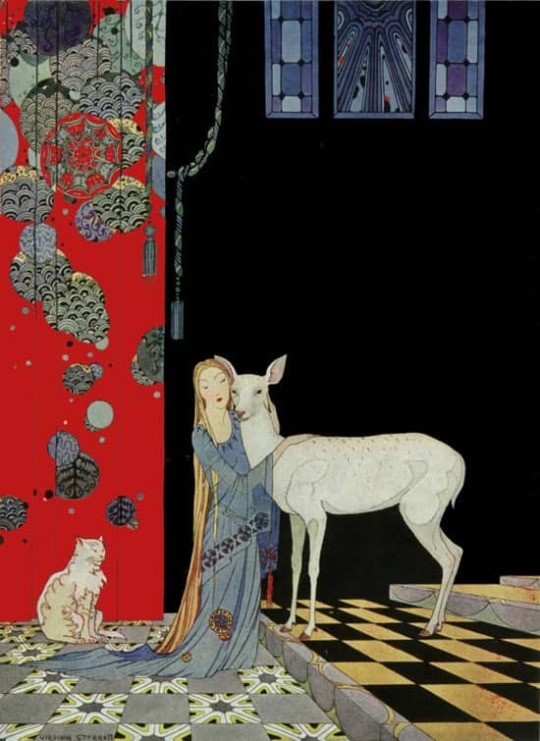
Old French Fairytales by Virginia Frances Sterrett, 1920
3K notes
·
View notes
Text
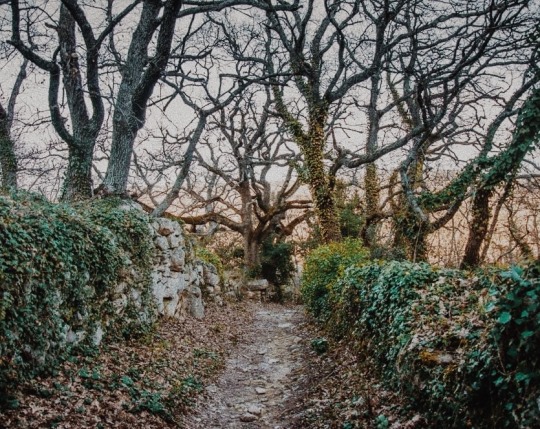



down the path xx
#travel#France#Lacoste#Provence#southern France#fairytale#fairytale vibes#mine#travel memories#spring#light academia#dark academia#cottagecore#old village#ivy#castle#decay#history#historic village#my photos#queue
19 notes
·
View notes
Photo

Rocamadour, France
#myphotography#rocamadour#france#village#castle#europe#summer#june#fantasy#magical#photography#fairytale castle
261 notes
·
View notes
Text





"Perfume: The story of a murderer"
About two years ago, I went into the local bookstore to search for some new literature.
I thought that one more time, I might leave with my hands empty. But then I looked into the belles-lettres section. And what I found there was one of the best books I've ever read. A novel by Patrick Suskind. A story about how desire and skill can drive into self-destruction. "Perfume: The story of a murderer" can't be described by a single sentence. And yes, maybe it's a book quite difficult to read for some people. But it's worth the trouble.
Now something about the book itself.
The book starts with a simple introduction to the world. The action takes place in 18th-century France. From Paris, where the main character was born, to Grasse, where he learned and mastered the art of perfumery. Jean-Baptiste's inhuman sense of scent mixed with dark and murderous desires lead him to kill innocent women of Grasse. To create the most beautiful perfume that'll make him invincible and loved by everyone in the world.
The book's filled with the atmosphere of a dark fairy tale
All of it finished with a hint of grotesque and traumatic events.
Trust me. It is worth a shot.
-Amelie
#chaotic evil#chaotic academia#academia aesthetic#aesthetic#dark aestetic#dark fairy aesthetic#dark fairytale#grotesque#patrick suskind#perfume#perfume the story of a murderer#grenouille#france#paris#grasse#books#classic literature#literature#review#book reccs#10/10 reccomend#vampire#patrick#suskind#idk lmao#idk man#cheese#pasta#garlic#gay
34 notes
·
View notes
Text
[ @scareqrowbranwen | qrow // for summer ]
“I picked up dumplings,” Summer announces without preamble as she breezes in through the front door. Is it locked? Could be. She hadn’t bothered to check. Or… knock. “What kind? Don’t know, didn’t ask, they smelled good and I’m starving so–”
Best thing about downtown Vale is the food trucks swarming all over the place; and by ‘best thing’ what she really means is ‘sole redeeming feature of what is otherwise an overcrowded and overpriced urban hive.’ Summer rocks into the kitchenette and slams her hard-earned prize triumphantly down on the counter.
“—you in?” she calls out belatedly. He might not be. He more often isn’t, though with how busy Ozpin’s kept him these last couple weeks she’d wager on Qrow being here if he’s not out chasing shadows in the sticks. Snorting, she tears open the paper sack and starts scooping foil-wrapped dumplings onto the counter. “I’ve had a day. Been at the guildhouse in suspension hearing purgatory since ten. Ten! Had, like, a pastry for lunch. Better be quick if you want to eat any of this before I do.”
#LEGENDS AND FAIRYTALES ( ic. )#THE WOMAN IS PERFECTED ( ic: summer. )#A DUET OF SHADE AND LIGHT ( v: beacon. )#scareqrowbranwen#[ ‘two threads you need to reply to’ you have been in FRANCE HRGFD#anyway. fire elmo dot gif.#summer operates on#the opposite of vampire entry rules.#BIT OF A BRAT THOUGH. gsgdjfk ]#[ reading this back i realized#the wording is somewhat vague#TO ELABORATE. summer sits on#the huntsman guild licensing board#hence suspension hearing.#she’s one of the people who can#vote to drop the hammer#on huntsmen who abuse their authority ]
19 notes
·
View notes